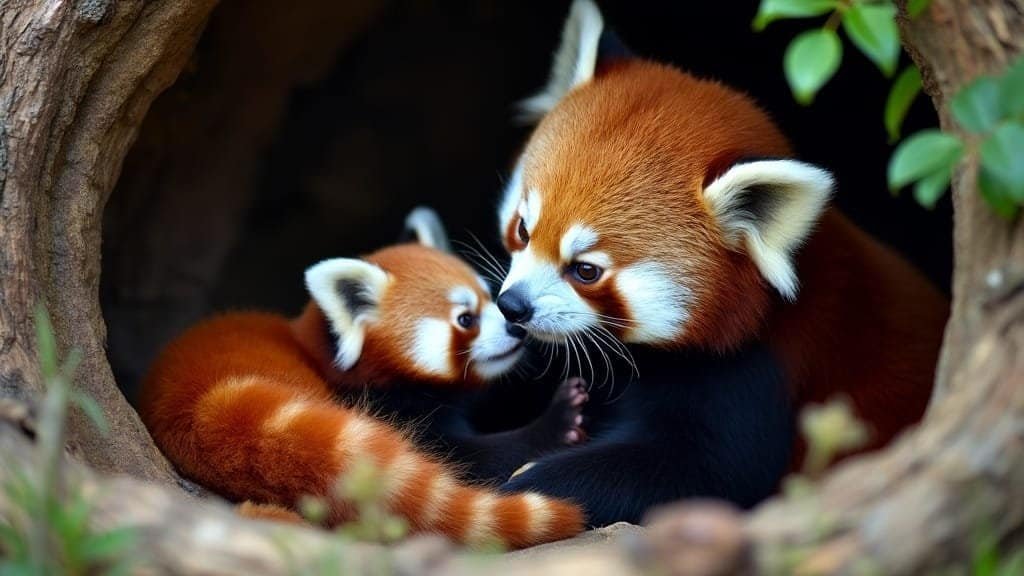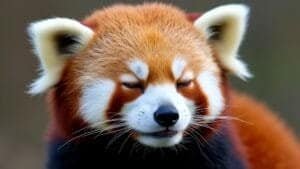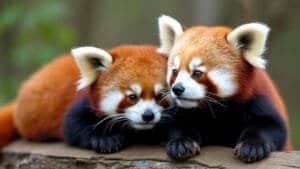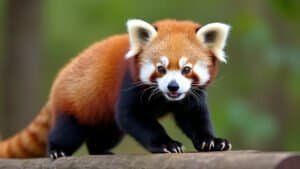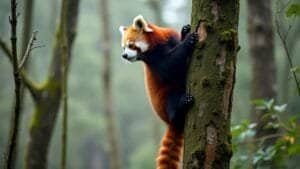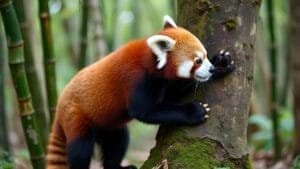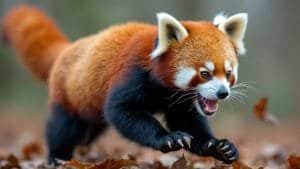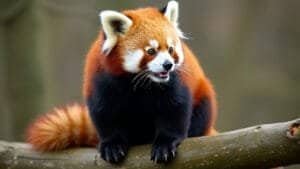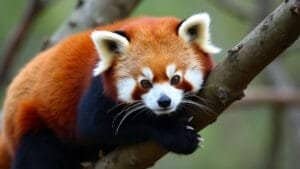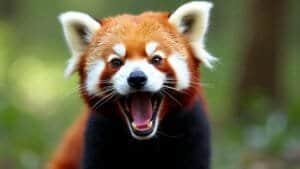Red pandas are known for their solitary and elusive nature, but during the early stages of cub development, mothers play a vital role in raising and protecting their young. Since red panda cubs are born blind and entirely dependent, maternal care is essential for survival, nourishment, and early learning. The mother provides a safe nesting environment, constant grooming, and frequent nursing, while also guiding her cubs through the critical milestones of growth and independence
In this article, we will explore how red pandas interact with their cubs during early development, focusing on nest-building, maternal care, cub communication, and the transition to independence. By understanding these nurturing behaviors, we gain insight into the unique challenges of red panda parenting and the importance of conservation efforts to protect this endangered species
How Red Pandas Interact With Their Cubs in Early Development
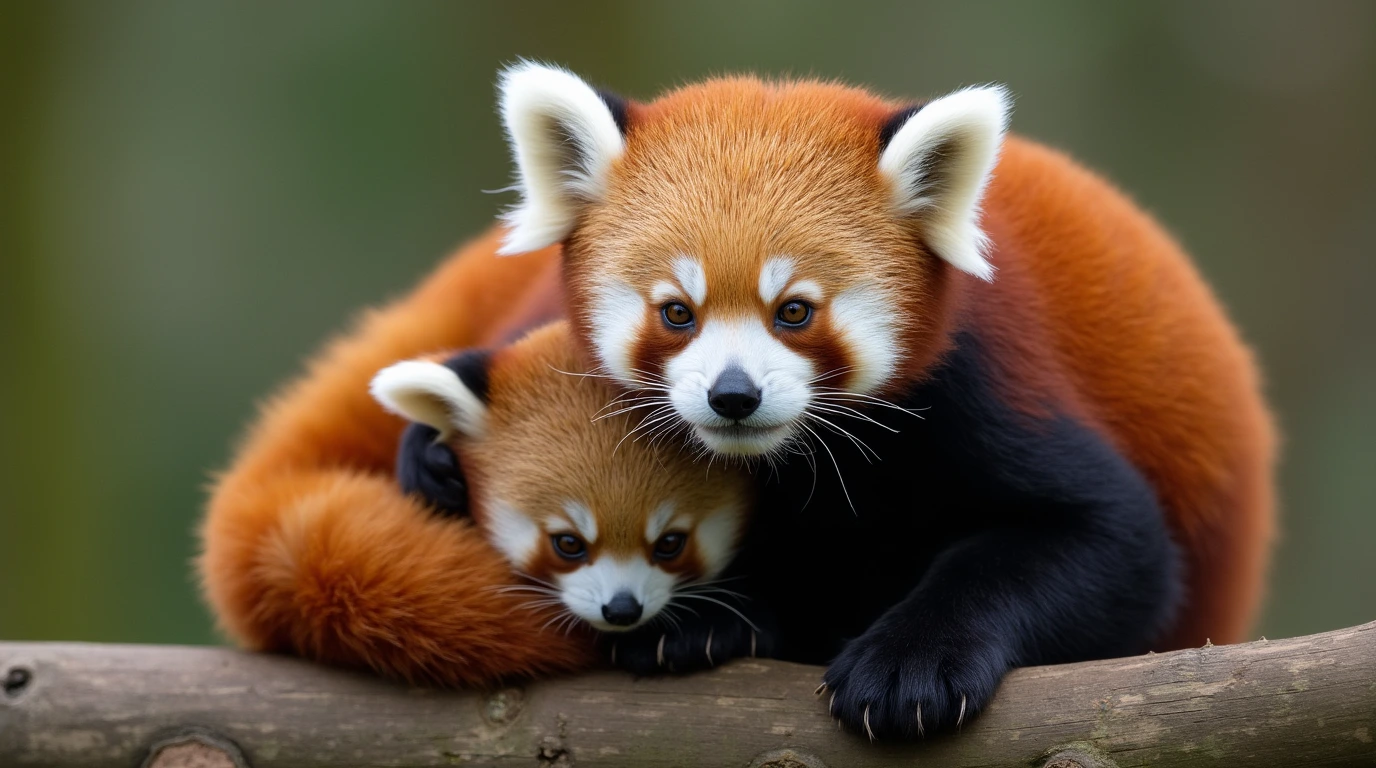
The early stages of a red panda cub’s life are marked by intensive maternal care, as newborns are completely dependent on their mother for survival. Red panda mothers create a safe and nurturing environment, ensuring their cubs receive warmth, nourishment, and protection during the most vulnerable weeks of development
Nesting Preparation Before Birth
Red panda mothers begin preparing for birth well before their cubs arrive by selecting and constructing a secure nest. Since cubs are born blind and immobile, the nest provides a warm, hidden refuge where they can safely develop during their early weeks. Mothers typically choose tree hollows, rock crevices, or dense vegetation as nesting sites, ensuring protection from predators and harsh weather conditions
Once a suitable location is selected, the mother gathers soft plant materials such as moss, leaves, and twigs, carefully arranging them to create a comfortable and insulated bedding for the cubs. This nest-building behavior is essential, as red panda cubs cannot regulate their body temperature at birth and rely entirely on their mother’s warmth and the insulation of the nest to survive
The mother may prepare multiple nest sites before giving birth, a behavior observed in both wild and captive environments. By switching dens every few days after birth, she minimizes the risk of predators detecting her cubs, ensuring their continued safety
First Interactions Between Red Panda Mothers and Cubs
After a gestation period of approximately 131 days, the mother gives birth to one to four cubs, though litters of one or two are most common. The newborns are tiny, covered in soft fur, and weigh only about 3.5 to 4.6 ounces (100–130 grams). Since they are born blind and deaf, their survival depends entirely on the mother’s constant care and attention
Immediately after birth, the mother licks and grooms her cubs, which stimulates their breathing, digestion, and circulation. This grooming process also strengthens the maternal bond, ensuring that the cubs recognize her scent and remain close for warmth and protection. Unlike some other mammals, red panda fathers do not participate in cub-rearing, leaving all responsibilities to the mother
During the first few weeks, the mother stays inside the nest for extended periods, leaving only briefly to forage for food and drink water. Each time she returns, she checks on her cubs, adjusting their position and licking them to maintain hygiene and stimulate bodily functions. This level of dedication ensures that the cubs remain healthy, warm, and well-fed
Nursing and Early Maternal Care
Red panda cubs rely exclusively on their mother’s milk for nutrition during the first few months of life. Nursing occurs frequently throughout the day, with feeding sessions lasting around 17 minutes each. Since red panda milk is rich in essential nutrients and antibodies, it provides the cubs with the energy needed for growth and immune system development
During the nursing period, the mother exhibits high levels of vigilance and care, constantly grooming her cubs and adjusting their position within the nest. She ensures they remain warm and protected, using her body to shield them from environmental threats. Unlike some mammals that carry their young, red panda mothers do not transport their cubs in their mouths but instead encourage movement by nudging and guiding them gently
At around three to four weeks old, cubs begin developing stronger muscles and slight mobility, but they still remain inside the nest. The mother continues to clean them regularly, as young cubs are unable to urinate or defecate on their own without stimulation from grooming. By maintaining strict hygiene, the mother reduces the risk of infections and keeps the nest environment healthy
As the cubs grow, the mother gradually spends more time outside the nest, returning periodically to nurse, groom, and check on them. She remains highly protective, often sniffing the area around the nest to detect any potential threats before entering. If she senses danger, she may relocate the cubs to another prepared nest, ensuring their safety remains her top priority
For more insights into red panda maternal care and nesting behaviors, you can explore the San Diego Zoo’s research on red panda reproduction, which details observations of early cub development in both wild and captive environments
Growth Milestones and Cub Development
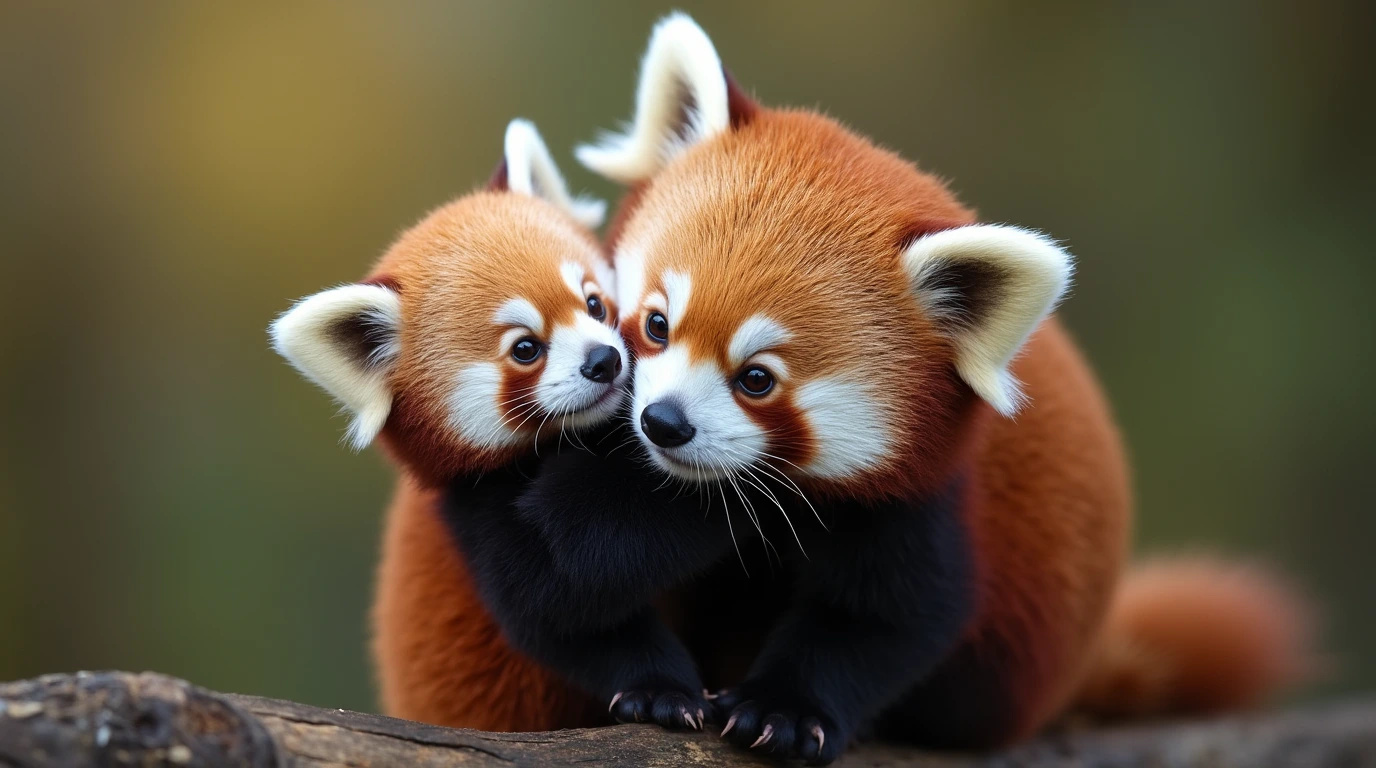
As red panda cubs grow, they reach several key developmental milestones that prepare them for an independent life in the wild. Their sensory abilities, mobility, and communication skills improve over time, allowing them to interact more with their mother and begin exploring the world outside their nest
How Cubs Communicate With Their Mother
Since red panda cubs are born blind and deaf, their initial form of communication relies on vocalizations and scent recognition. During the first few weeks, they emit high-pitched whistles called “wheets” to signal distress, hunger, or discomfort. These sounds help the mother identify which cub needs attention, prompting her to reposition them, provide warmth, or initiate nursing
At around two to three weeks old, their eyes begin to partially open, and they develop stronger scent recognition abilities. They start responding to their mother’s movements and scent-based cues, allowing for more interactive communication. By the time they reach one month old, they begin producing soft twittering sounds, a sign of early social behavior that strengthens the bond with their mother
By the time cubs are around three months old, their range of vocalizations expands, including chirps, growls, and low whistles. These sounds help them express discomfort, excitement, or curiosity as they start interacting more with their surroundings
When Red Panda Cubs Start Exploring Outside the Nest
At approximately 90 days old, red panda cubs experience a significant shift in behavior, as they begin venturing outside the nest for the first time. By this stage, their eyes are fully open, their coordination improves, and they start using their sharp claws to explore the branches and terrain near the den
During these first outings, the mother remains highly protective, closely supervising her cubs and retrieving them if they stray too far. Cubs initially stay within close range of the nest, slowly gaining confidence in their climbing and movement skills
As they explore, cubs begin mimicking their mother’s behaviors, such as:
Practicing climbing techniques by grabbing onto tree trunks and low branches
Attempting to chew on bamboo leaves, although they are still primarily nursing
Learning scent-marking behaviors, sniffing and rubbing their faces on surfaces
The Weaning Process and Transition to Solid Food
Weaning begins between four and six months old, marking the transition from a milk-based diet to solid foods. Cubs start nibbling on bamboo leaves, shoots, fruits, and soft vegetation, though they continue nursing occasionally for additional nutrition
By six to eight months old, cubs become more reliant on solid food, as their digestive system fully adapts to processing fiber-rich meals. During this phase, their mother guides them in foraging techniques, showing them how to select and chew bamboo efficiently
Although nursing sessions gradually decrease, cubs may still seek comfort from their mother, particularly in stressful situations. Weaning is a gradual and gentle process, allowing cubs to adjust naturally to their new diet. For further insights into red panda cub development and early-life communication, you can explore the Toronto Zoo’s research on red panda cub growth, which documents their behaviors in controlled environments
Independence and Life Beyond Maternal Care
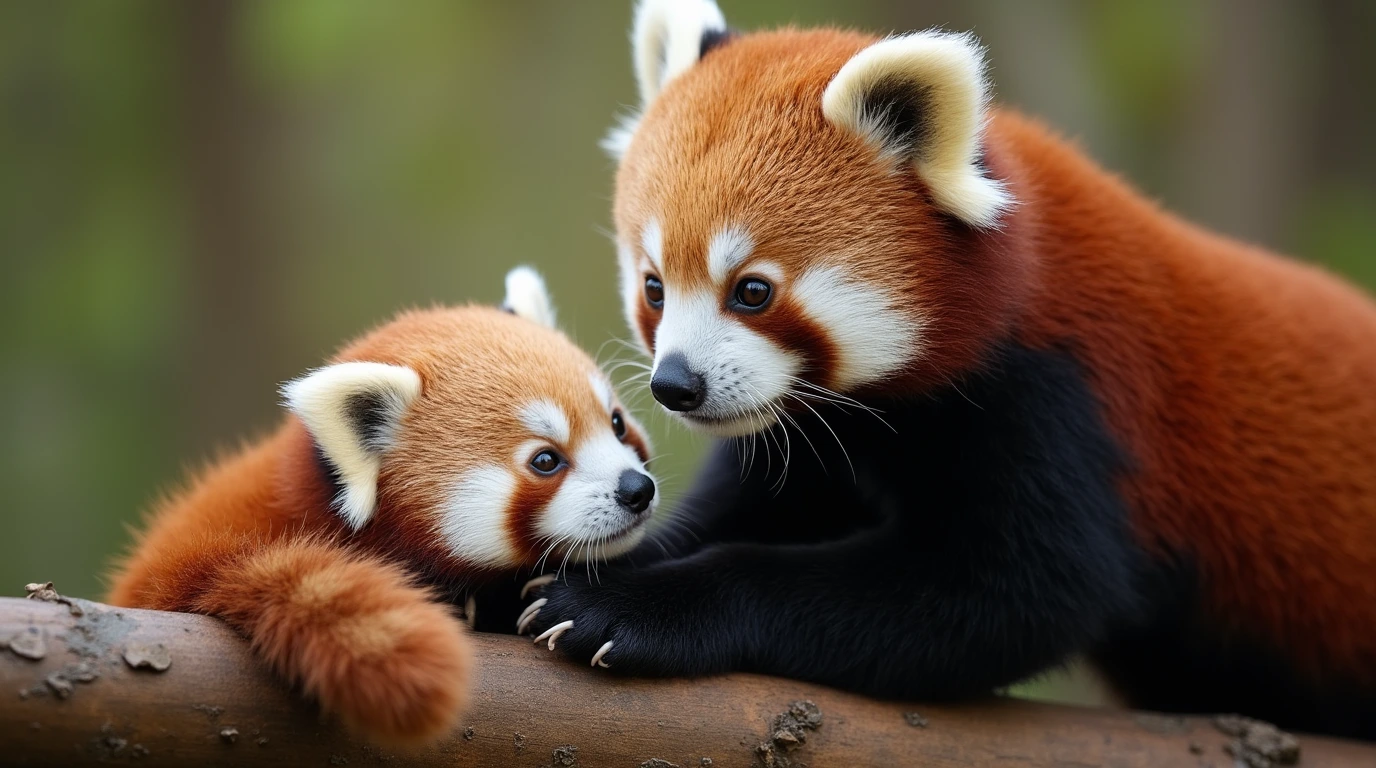
As red panda cubs mature, they gradually transition from dependence on their mother to full independence. This stage involves learning essential survival skills, gaining confidence in climbing, foraging, and territory navigation, and eventually leaving their mother to establish their own home range
How Long Cubs Stay With Their Mother
Red panda cubs remain under their mother’s care for up to 12 months, though their level of dependence changes over time. In the first six months, they rely heavily on her for nourishment, warmth, and protection, with little independence. Between seven and ten months old, they begin spending more time exploring on their own, though they still return to their mother’s den for comfort and security
During this period, the mother starts gradually distancing herself, encouraging her cubs to become self-sufficient. She provides less direct attention, allowing them to develop their foraging and survival skills. By the time cubs reach one year old, they are capable of living independently and start preparing to leave their mother’s territory
How Cubs Learn Survival Skills
As red panda cubs grow, their mother teaches them essential behaviors for survival. Some of the key skills they develop include:
Climbing Proficiency: Cubs practice scaling trees and navigating branches, using their sharp claws and flexible ankles to move efficiently. The mother supervises their early climbing attempts, ensuring they build confidence and coordination
Foraging Techniques: As cubs transition to solid food, their mother demonstrates how to strip bamboo leaves from stalks, select ripe fruits, and locate other plant-based foods. By observing and mimicking her movements, cubs learn how to feed efficiently in their environment
Scent Marking and Territory Awareness: Cubs begin to rub their faces, tails, and scent glands on surfaces, mimicking their mother’s territorial behavior. This practice helps them establish their own identity and prepare for future territory marking when they become independent
Defensive Behavior: Mothers introduce their cubs to threat-avoidance strategies, including tree climbing to escape predators, standing on hind legs for intimidation, and using vocalizations like huffs and barks to deter threats
Dispersal and Establishing Their Own Territory
At around 12 months of age, red panda cubs reach full independence and leave their mother’s territory to establish their own home range. This dispersal is necessary to avoid competition for food and resources and to prevent inbreeding among closely related individuals
Young red pandas travel alone, searching for unoccupied territories where they can thrive. They begin scent-marking their surroundings, staking out a claim to their new environment. In the wild, red pandas maintain large home ranges, typically spanning 0.5 to 1.5 square miles, depending on food availability and forest density
Although they become fully independent, red pandas continue exhibiting solitary behavior, only interacting with others during the mating season. Some cubs may settle in areas adjacent to their mother’s territory, while others travel further to find a suitable range with abundant bamboo
Captive red pandas also follow this natural pattern, with zoos and wildlife facilities separating young red pandas from their mothers around one year old to mimic their natural dispersal. This approach ensures that they develop self-sufficient behaviors and are prepared for potential reintroduction into the wild. For more details on red panda cub independence and dispersal, you can explore the ScienceDirect study on red panda maternal investment, which examines their growth and behavioral development
